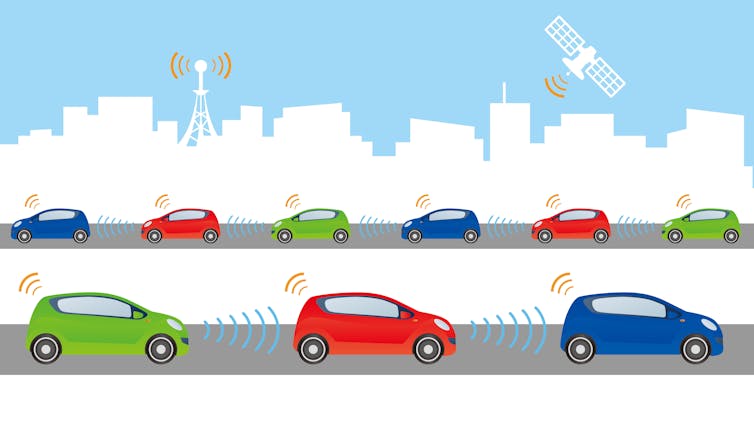Your Ultimate Guide to Carnitine: What It Is, How It Works, and Why You Should Use It
Let’s talk about carnitine.
Carnitine, comes from an amino acid and is an element of nearly every cell in the body. It is part of various compounds that include L-carnitine, acetyl-L-carnitine, and propionyl-L-carnitine, and is important in energy production of the body.
For example, l-carnitine transfers fatty acids from the blood into the mitochondria, the energy producing “furnaces” in the cells, so that the fatty acids can be used as energy.
L-carnitine can improve stamina because it stops the collection of lactic acid in the muscles.
Normally, a healthy human body creates enough of its own carnitine to meet its needs. However, in some case, genetic or medical issues can create a deficiency (including premature babies).
It’s primarily used for patients with heart-related problems, with some research indicating that it can be used (in conjunction with conventional treatment) for angina. Used in combination with traditional therapies, carnitine may also lower mortality rates after a heart attack.
There is less evidence to suggest that carnitine may be helpful for intermittent claudication (pain in the legs after walking due to narrowing of the arteries), in addition to congestive heart failure and cardiomyopathy.
Carnitine might also be useful for better exercise tolerance in patients with chronic pulmonary obstruction disease (COPD).
Additionally, many athletes use l-carnitine supplements, believing that they improve overall performance and recovery.
What Is Carnitine Deficiency?
There are two carnitine deficiency states. The National Institutes Of Health notes, “Primary carnitine deficiency is a genetic disorder of the cellular carnitine-transporter system that usually manifests itself by five years of age with symptoms of cardiomyopathy, skeletal-muscle weakness, and hypoglycemia.”
Secondary carnitine deficiencies can be caused by disorders like chronic renal failure, or when medications or activities reduce carnitine absorption. Carnitine, as a prescription product, can treat these deficiencies, but should only be prescribed by a physician.
Signs and symptoms of primary carnitine deficiency occur during infancy and/or early childhood; such symptoms include “brain dysfunction (encephalopathy), a weakened and enlarged heart (cardiomyopathy), confusion, vomiting, muscle weakness, and low blood sugar (hypoglycemia).”
Some people with primary deficiency show no symptoms, but anyone with primary carnitine deficiency is at higher risk for liver problems, heart failure, coma, and sudden death.
The Benefits of Carnitines
Carnitine offers many benefits to our health. Our skin needs creatine to function normally, including the creation of connective tissue, metabolism, and cell renewal. Creatine comes from the amino acids arginine and methionine, which are part of carnitines.
Carnitines also heighten fat metabolism, making it a well-known “fat-burner”. Fatty acids transported into the cells are burned to release energy in the mitochondria, the “power stations” of the cells. The long-branched chain fatty acid molecules can only enter the mitochondria with the help of carnitine.
With regular exercise, carnitine can produce a higher rate of fat burn. This is beneficial for those trying to lose weight, and supplements and energy drinks with L-carnitine are said to boost metabolism, help people lose weight, and improve athletic performance. The verdict is still out on l-carnitine’s fat-burning capacity or its ability to improve athletic performance, but it does show promise.
According to the Office of Dietary Supplements, “studies confirm that cancer patients who took between 250 milligrams (mg) to 4 grams (g) of L-carnitine per day experienced less fatigue.”
Other studies suggest that L-carnitine supplementation can
· improve insulin sensitivity and lessen nerve pain for type 2 diabetes patients
· improve fertility (sperm mobility) in men
· lower risk of death for those who have had one or more heart attacks
· provide some cognitive improvements in the elderly
L-carnitine also may benefit brain function in healthy or cognitively impaired individuals. ALCAR (Acetyl-L-Carnitine) studies have suggested that it can contribute to increased learning capacity. Experiments using rats found that the ALCAR-treated subjects learned more and remembered more than those in a control group.
During human studies, taking ALCAR appeared to at least slow the decline in brain function for Alzheimer’s patients and those suffering from other degenerative brain diseases.
Another study found that Acetyl-L-carnitine showed signs that it may be able to protect the brain from cell degeneration. This particular study involved alcoholic individuals taking 2 grams of ALCAR every day for three months. These people demonstrated marked improvements in every measure of brain function.
In addition, anecdotal evidence suggests that there may be several other benefits to supplementing with L-carnitine:
Body Composition
· increased muscle
· loss of fat
· increased energy
Physical Performance
· stamina during exercise
· reduction of leg cramps during exercise
· increased blood flow to areas low in oxygen
Blood Glucose Control
· improvement of pancreatic beta cell function
· improved insulin sensitivity
· enhanced exercise performance for blood sugar regulation
Sexual & Reproductive Performance
· improvement in sperm quality (younger males)
· increase of erectile function
Dosage of Carnitines
Healthy individuals generally do not need carnitine supplements because the kidneys and liver produce enough carnitines from the amino acids present in the body. The Food and Nutrition Board (FNB) of the National Academies (formerly National Academy of Sciences), after a review of studies on carnitines in 1989, concluded that it is not an essential nutrient. “The FNB has not established Dietary Reference Intakes (DRIs)–including a recommended dietary allowance (RDA)–for carnitine.”
Carnitines are best ingested through red meat, fish, poultry, and milk. Scientists say, “the redder the meat, the higher its carnitine content.”
Should you desire supplementation, it is important that you check with your doctor for the correct dosage:
-
For ALCAR, for brain health and function, doses can be from 600—2,500 mg daily.
-
L-Carnitine L-Tartrate, for exercise performance, can be dosed from 1,000—4,000 mg daily.
-
Glycine Propionyl-L-Carnitine (also called GPLC), for improving blood flow, is best in doses from 400—1,000 mg daily.
A thorough review of current research suggests that up to 2,000 mg (2 grams) daily appears safe for long-term use of L-carnitine.
Carnitine Supplements
Carnitine supplementation can be tricky. Those who experience diabetic neuropathy, cognitive decline, cancer treatments, or deficiency in L-carnitine for medical reasons can benefit from supplementation. However, they should do so only while under a doctor’s care.
Vegans and vegetarians often experience low L-carnitine levels because they restrict or avoid their intake of animal products. As such, it would be wise for vegans and vegetarians to take L-carnitine supplements. Currently, however, there are no studies on this particular population to support supplementation.
Levels of L-carnitine decline as we age. So, the elderly may benefit from a supplement. In one study, “2 grams of L-carnitine reduced fatigue and increased muscle function in elderly people.” Other research suggests that ALCAR can help improve brain health and function as the body ages.
Those with cirrhosis and kidney disease are at higher risk for carnitine deficiency. As such, they could benefit from a supplement.
Carnitine Side Effects
When doses of carnitine supplements reach 3 grams/day, the supplements can cause vomiting, abdominal cramps, nausea, diarrhea, and a peculiar body odor. Other, more rare side effects include muscle weakness (in uremic patients) and seizures (in patients suffering from seizure disorders).
Some research that suggests that when intestinal bacteria metabolize carnitine, it forms something called TMAO, which can raise the risk of cardiovascular disease. These findings are not conclusive, and more research is required to clarify the risks.
Patients with long-term urinary tract infections or those who have seizure disorders that require certain medications are at risk for carnitine deficiency. When this occurs during the course of normal treatment, physicians may prescribe a carnitine supplement to reverse the effects of the deficiency and aid in maintaining patient health overall.
Research suggests that in healthy men, carnitine supplementation of 3000mg per day over the course of 3 weeks produced no changes in any blood or enzyme limits. Therefore, it can be supposed that oral carnitine supplementation is safe. However, patients have complained of irritating side effects like diarrhea, gastrointestinal pain, nausea, vomiting, headaches, and insomnia.
Some evidence reveals that carnitine supplementation can influence the regulation of thyroid hormones. Therefore, supplementation of carnitines is not recommended for people with hypothyroidism (an underactive thyroid). Additionally, carnitine supplements have been known to increase the frequency and severity of seizures in those with seizure disorders. Patients on anticonvulsant therapy should not take carnitine supplements.
Carnitine: Yes or No?
The research clearly suggests that bodybuilders and athletes should be able to use carnitine supplements safely, along with those who suffer from carnitine deficiency. Those who have genetic or medical needs for carnitine supplementation should be under a doctor’s care.
However, for most healthy people, supplementation is unnecessary and potentially dangerous. In any case, it is vital that you talk with your doctor prior to beginning any fitness regimen that may include carnitine supplementation, or before supplementing for other purposes.
Article republished: www.vitamonk.com















